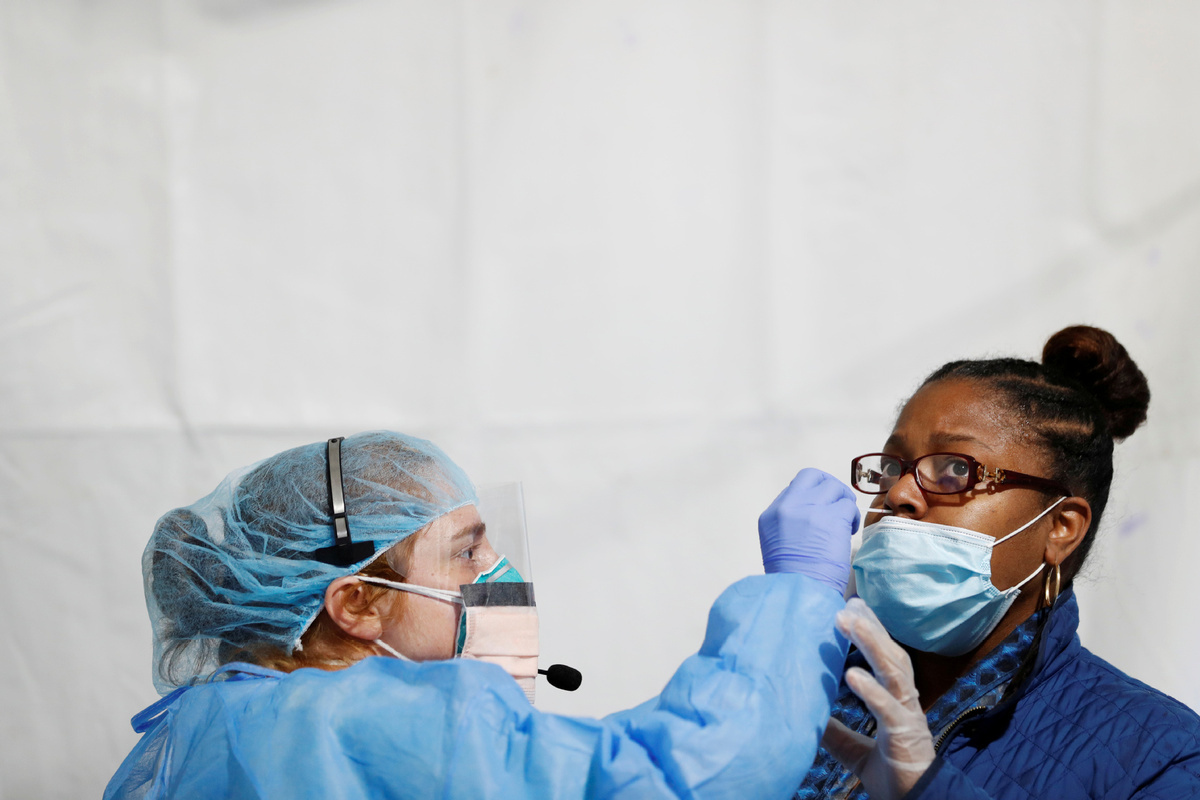
Lindsey Leinbach takes a swab to test for the coronavirus at a One Medical testing facility built to help with the coronavirus disease (COVID-19) outbreak, in the Bronx borough of New York City, US, April 21, 2020. (Photo: Agencies)
Public health experts and Democratic politicians have criticized new guidelines from the Centers for Disease Control and Prevention (CDC) that say people don't necessarily need to get tested for the novel coronavirus if they have no symptoms, even if they have been in close contact with infected people.
Public health experts said the guideline changes could lead to less testing, making it harder for the US to contain outbreaks and hinder contact-tracing efforts.
"This change in policy will kill," tweeted Alison Galvani, director of the Center for Infectious Disease Modeling and Analysis at the Yale School of Medicine. "Our work on the 'silent' spread underscored the importance of testing people who have been exposed to COVID-19 regardless of symptoms."
The president of the American Medical Association, Susan Bailey, said the CDC and the US Department of Health and Human Services (HHS) should provide the scientific justification behind the change.
"Suggesting that people without symptoms, who have known exposure to COVID-positive individuals, do not need testing is a recipe for community spread and more spikes in coronavirus," she said.
Democratic governors in California, Washington, Connecticut, and New York said Wednesday they won't follow the new guidelines issued Monday on the CDC's website without public notice.
Connecticut Governor Ned Lamont said the CDC was "dead wrong" to say individuals exposed to the virus don't need to be tested. "If you've been exposed, you can be a carrier, you can be infectious well before you show symptoms," he said.
New York Governor Andrew Cuomo tweeted: "This is not science. It's politics. Politics that are dangerous to public health. It's indefensible."
House Speaker Nancy Pelosi, a California Democrat, called the guidelines "scary and dangerous" and promised to investigate the change.
The new guidance is a change from previous CDC advice that recommended testing for all who have had close contact with infected individuals, regardless of whether they had symptoms.
The guidelines still encourage individuals to "consider" getting a test if they have been within 6 feet of a person who has tested positive for the virus.
The new CDC guidelines don't set laws or mandate testing. Each state or locality has the authority to make its own decisions on who should be tested and when.
The new guidelines are in line with President Donald Trump's repeated requests for less coronavirus testing. In July, Trump said that the number of new cases would go down with less testing and that the number of tests "makes us look bad".
On a Wednesday morning call with reporters, Admiral Brett Giroir, the HHS assistant secretary for health who is in charge of testing, defended the changes and denied that there was any political intervention or pressure from the Trump administration for the CDC to make the changes.
"There was no weight on the scales by the president or the vice-president or Secretary Azar," Giroir said, referring to HHS Secretary Alex Azar. He said that the guidance is meant to encourage more "appropriate testing" and not less testing.
"Let me tell you, right up front, that the new guidelines are a CDC action," he said.
He added that the entire White House Coronavirus Task Force, including Dr Anthony Fauci, the government's top infectious disease expert, and CDC Director Dr Robert Redfield discussed and agreed on the new guidelines on Aug 20.


